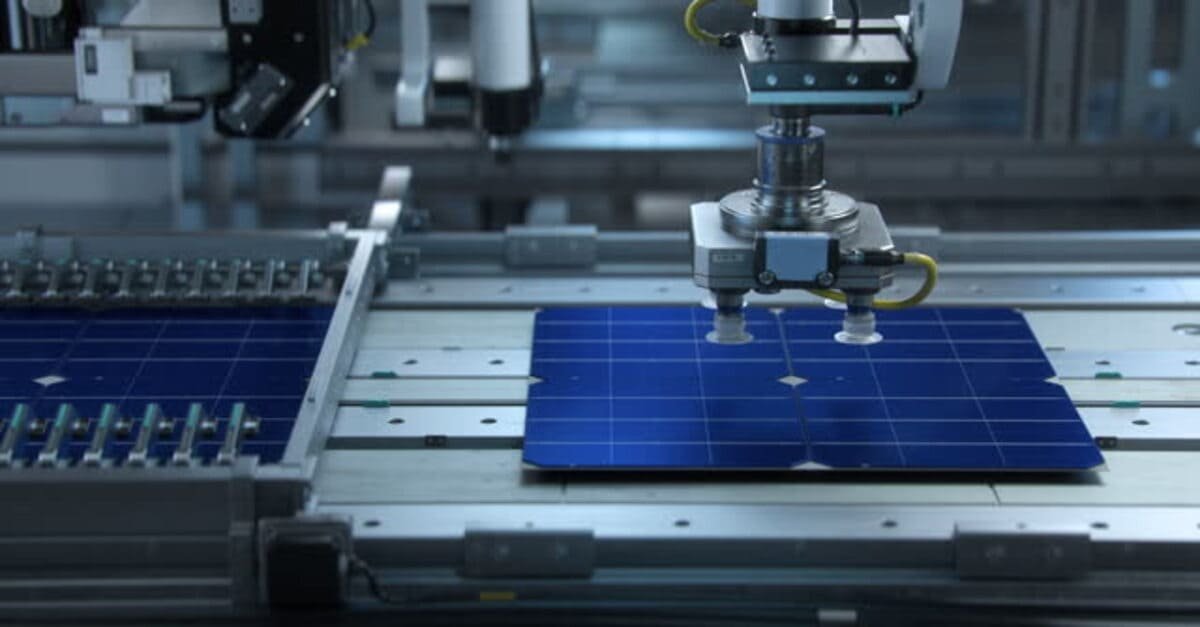Solar panels have become a ray of hope in the search for environmentally friendly energy options. In addition to being interesting, their capacity to capture solar energy and transform it into electrical power is essential to the fight against climate change. Ever wonder how these mighty machines are put together? This blog post examines the world of solar panel manufacture and its importance in the context of renewable energy, including everything from the materials used to the complex manufacturing process.
What are Solar Panels Made of?
A story of technical wonder and innovation is the development of the solar panel. A solar panel’s fundamental parts are numerous essential elements, each of which is essential to the panel’s operation:
- Solar Frame: The strong aluminum backbone holds the solar panel together, offering structural stability and defense against external stresses.
- Solar Glass: A transparent layer that shields the solar cells while allowing sunlight to penetrate efficiently.
- Solar Encapsulant: A covering made of material, usually ethylene-vinyl acetate, which shields the solar cells from mechanical harm and moisture.
- Solar Backsheet: The panel’s back layer, which is constructed of materials like polyester, fluoropolymer, or EVA, is intended to act as an electrical insulator and moisture barrier.Together, these parts guarantee that the solar panel captures solar energy and transforms it into electrical power.
Solar Panel Manufacturing Process
The production of solar panels is a meticulous process that involves several stages:
- Silicon Extraction: It all starts with sand, specifically quartz sand, which is rich in silicon. This silicon is extracted, purified, and melted at high temperatures to create silicon ingots.
- Ingot Formation: A small amount of boron is added to the molten silicon, giving the silicon a positive electrical polarity. This creates a monocrystalline cell, known for its high efficiency.
- Wafer Slicing: The silicon ingots are then sliced into thin wafers, as slim as a piece of paper, which will become the base for solar cells.
- Solar Cell Creation: The wafers are treated with anti-reflective coatings and implanted with metal conductors to form the grid-like structure visible on solar cells.
- Assembly: Solar cells are interconnected and sandwiched between layers of solar glass and encapsulant material, then sealed within the solar frame.
This process creates solar panels that are ready to be installed and used to generate clean, renewable energy.
How Solar Panels Work
In their most basic form, solar panels function by using photovoltaic cells to collect sunlight, producing direct current (DC) energy, and then using inverter technology to convert the DC energy into usable alternating current (AC). This energy can then be used to run companies and residences, and in certain situations, it can even be fed back into the grid.
Types of Solar Panels
As a clean, sustainable energy source, solar panels are growing in popularity. But it can be not easy to choose the best type for your needs given the variety of possibilities available. Let us examine the four primary categories of solar panels to assist you in making an accurate choice:
1. Monocrystalline Panels:
- Made from a single, pure silicon crystal, these panels boast the highest efficiency (20-22%) in converting sunlight into electricity.
- Their uniform black appearance adds a sleek aesthetic to your roof.
- However, their efficiency comes at a cost, as they are generally the most expensive option.
2. Polycrystalline Panels:
- Crafted from multiple silicon crystals, polycrystalline panels offer a more affordable option compared to monocrystalline ones.
- Their efficiency falls slightly behind, ranging from 15-17%.
- They have a distinctive blue hue and are a good value proposition for those looking for a balance between cost and performance.
3. Thin-Film Panels:
- These panels are made from a thin layer of photovoltaic material deposited on a substrate like glass, plastic, or metal.
- Their lightweight construction makes them suitable for unconventional roof types or portable applications like RVs.
- They are less efficient (6-15%) than crystalline panels but can perform better in low-light conditions.
- Types of thin-film panels include cadmium telluride (CdTe), amorphous silicon (a-Si), and copper indium gallium selenide (CIGS).
4. PERC Panels:
- Passivated Emitter Rear Cell (PERC) panels are a subtype of monocrystalline panels with an additional light-trapping layer.
- PERC layer improves efficiency (1-2% more than standard monocrystalline) by reflecting otherwise lost sunlight back into the cell.
- It is more expensive than traditional monocrystalline panels, PERC technology offers better performance.
Conclusion
The process of making solar panels involves a complex dance between nature and technology. Knowing how these devices are manufactured allows us to appreciate the amazing effort that goes into creating the clean energy that powers our world. As solar technology develops, we may anticipate ever-more sustainable and effective solar solutions.
